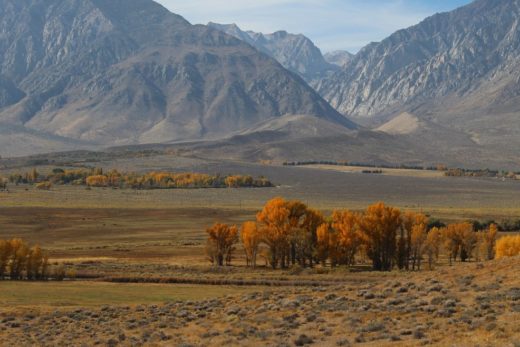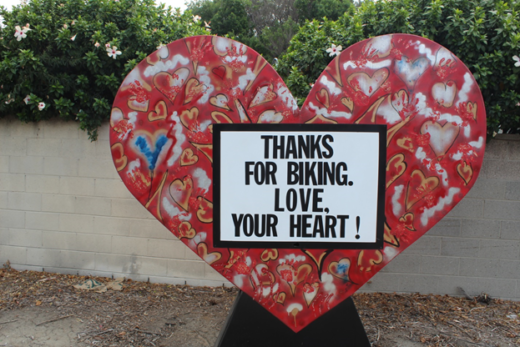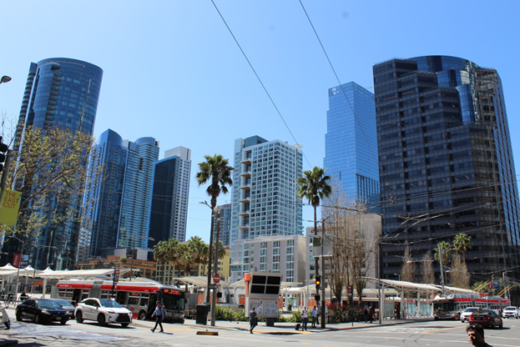After the sun sets over our urban centers, new moods and atmospheres emerge that help transfigure perceptions of urban landscapes. Particularly on weekdays, workers in business, technology, government, and related services may dominate in the office buildings, flooding the streets during their lunch hours. After sunset, these workers may return home or stay in the city to spend their money purchasing other services. This nocturnal celebration of free time by 9-to-5 workers supports a very different and more conspicuous dominant service workforce that includes the restaurant, retail, art, and entertainment industries.

In other words, the intense, fast-paced, business-only atmospheres by day may change to a more leisurely pace where these nighttime and weekend service workers (often, but not always less educated) are serving professionals seeking relaxation, recreation, and pleasure by night. In our largest cities, especially on weekends, people may even crowd toward high-energy entertainment and other venues and special events that may become carnival-like atmospheres celebrating our most cutting-edge popular cultures.

These nocturnal activities that can be indicators of a thriving, functional city are most noticeable within our three largest metropolitan areas (San Francisco Bay, Los Angeles, and San Diego), where gentrification and revitalization during this century jumped-started urban center economies and cultures. Still, some of the smaller and more suburban urban centers detached from our largest conurbations are struggling to define themselves. Like Los Angeles and San Diego decades ago, they may become virtual ghost towns at night and on weekends when urban workers abandon the very places where they make their money only to commute back to their homes in the suburbs where they will spend their money.
Downtown Fresno continues struggling, while cities such as Long Beach (with their DTLB) and Santa Ana (with their DTSA) have enjoyed recent successes, partly because many other urban centers in the Los Angeles conurbation have become so expensive and overcrowded. Whether you’ve recognized them as urban professionals, cosmopolitans, hipsters, or clubbers, the 24/7 urban dwellers often carry plenty of energy and disposable cash that helps support and define a functional city in the 21st Century. Urban centers that have not discovered ways of attracting these crowds at night and on weekends continue to suffer from a dysfunctional nocturnal evacuation, an urban malaise hangover reminiscent of the 1960s, 70s, and 80s. Sacramento seems to be caught somewhere between the two extremes.
Though its role as our state capital makes it unique, Sacramento still functions to serve office workers (necessarily represented by a larger proportion of government employees) during the day. As an example, note how Sacramento estimates that more than 70,000 office workers crowd its buildings by day in the Capitol Mall district alone. Still, as one of the fastest growing metropolitan areas in our state, much recent growth has occurred in its suburbs and exurbs; this may remind us of the trends that evacuated and crippled California’s urban centers during the mid-1900s. Perhaps more importantly, it remains a city with a unique history, a distinct personality, and a strong sense of community that you may not notice in California’s other urban centers. How it embraces that uniqueness and bridges its fascinating history with its promising future may determine downtown Sacramento’s success. Let’s take a walking tour through parts of downtown Sacramento during a weekday night in the spring of 2018 to gauge the progress.
Though several busy restaurants, cafes, and other establishments had spilled out on to sidewalks in surrounding neighborhoods, you might notice that such activities haven’t yet transformed some of the landmarks we visited. And though these nocturnal landscapes appear to be relatively clean and safe (two key prerequisites to bringing people back to any downtown) and in various stages of rehabilitation, a few strategic locations seem to still be searching for keys to a true renaissance.
Submitted for your consideration are K Street and what was once advertised as the old Westfield Shopping Town or Downtown Plaza. This reimagined district (now affectionately and optimistically referred to as “The Kay”) is only anchored where K Street ends at what has replaced the old shopping plaza: a sleeker, more futuristic 21st Century-style Downtown Commons. Will these makeovers finally jump start a struggling K Street?
But the shining new star in this district is the high-tech Golden 1 Center, home to the NBA’s Sacramento Kings and host to a wide range of other entertainment events and conventions. This serves as the perfect example of California cities’ efforts to remake their urban cores with sports arenas, stadiums, and entertainment centers that can draw the crowds. If you are looking for example successes, try downtown San Diego’s baseball stadium that spills out into the Gaslamp, L.A.’s Staples Center that brought pro hockey, basketball, and hundreds of other events (and hundreds of thousands of people) each year as it anchors L.A. Live, or the San Francisco Giants’ renowned baseball stadium that transformed their waterfront in China Basin. In 2019, the NBAs championship Golden State Warriors make their move across the Bay to their new arena, the next crown in The City’s Mission Bay neighborhood. Sacramento boosters are hoping that the futuristic Golden 1 Center is helping to build the same kind of momentum in their downtown.
Next, we head to the adjacent Old Town. Whether you consider it a grand example of California’s Wild West or a nostalgic illusion of the past remade to attract tourist dollars, it’s at least a white-washed rendition of urban landscapes in the 1800s, when Sacramento flourished with whatever was left of Gold Rush fortunes lost and found. After a stop to view the river and transportation that made this town, we head across the Sacramento River over the historic (1935) Tower Bridge.
Just on the other side, we see where West Sacramento found room to replace old warehouses and rail yards with Raley Field. Here, among other events, the Triple-A Sacramento River Cats play baseball before they are called up to join the San Francisco Giants. Here’s another gathering place, a diamond that Sacramento residents are proud to crow about, typical of smaller California cities looking to rally around hometown sports teams.
We return back east over the Tower Bridge to visit the Wells Fargo Museum at the Capitol Mall. This storied California bank that grew to become a powerful corporation (with the more recent mergers, takeovers, and scandals that too often help define such economic powerhouses) is proud to display the key role it played in fueling California’s rise to fame during those Gold Rush years and in the boom years since. We appropriately end our nocturnal urban geography walk at the State Capitol.
You might notice the many more issues and problems that help define and challenge California cities as they loom in the background of our images and discussions here: transportation, urban sprawl, gentrification, historic preservation, affordable housing, homelessness, urban planning, and zoning are just a few examples. We suggest you look through our publication (particularly Chapter 11) where we attempt to understand and improve the foundations, structures, and functions of our state’s large and small urban centers.




